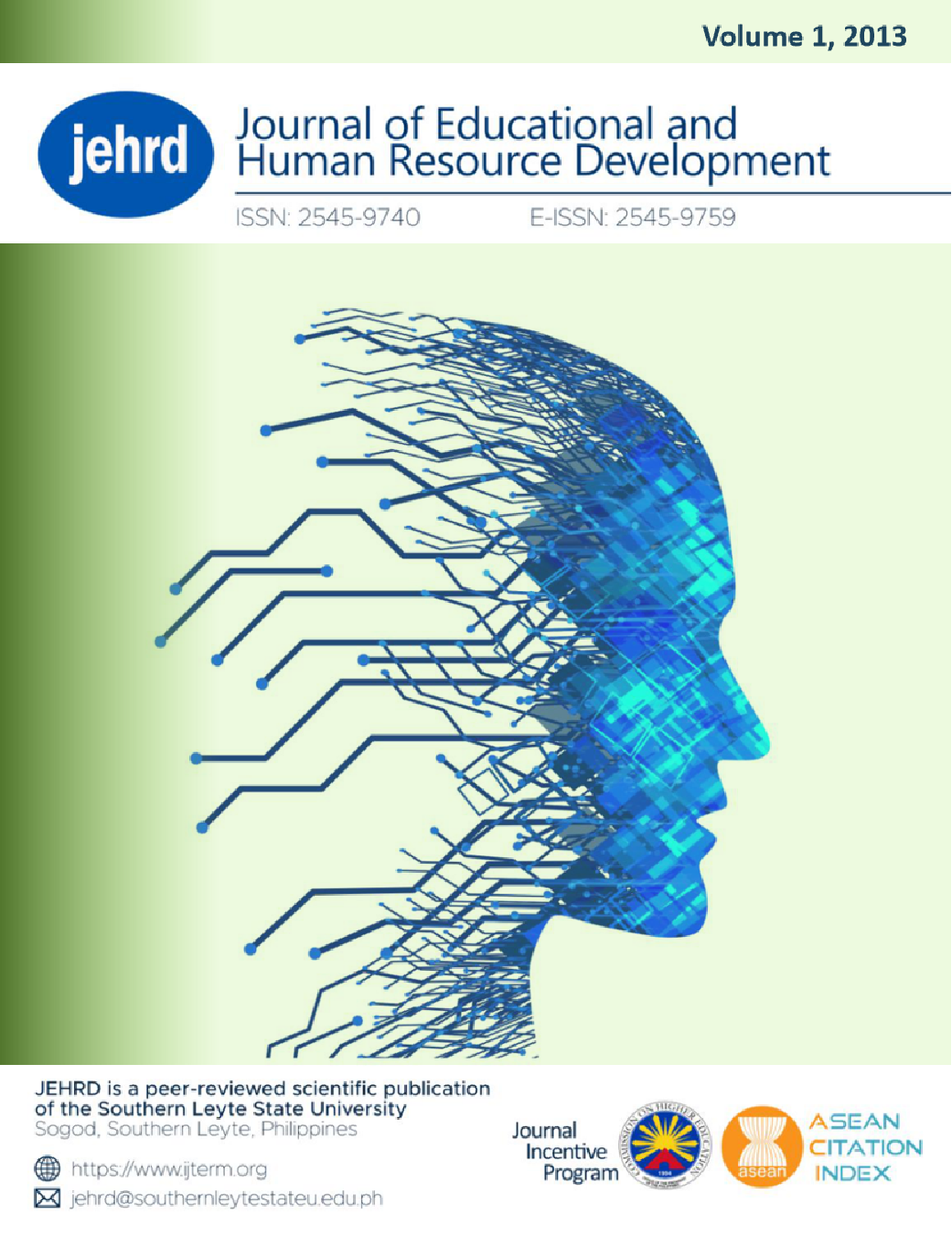TEACHING AS A SECOND CAREER: PROCRUSTES PROFILE ANALYSIS OF CAREER SWITCHERS
DOI:
https://doi.org/10.61569/b9ykdg61Keywords:
teacher education, career-switchers, descriptive-longitudinal, procrustes profile analysisAbstract
For decades, the traditional path to a teaching career has involved entering the classroom immediately after graduating from college. However, the demographics revealed that about half of modern teachers filling the nation’s classrooms are second-career teachers. These are professionals who graduated a special program for teachers and passed the LET Exam qualifying then to teach. As a prevalent phenomenon, this study was conducted to uncover motives and reasons that continually attract professionals to choose teaching as a second career. Forty-one DBET students of SLSU-Tomas Oppus from SY 2011-12 to SY 2013-14 were purposively chosen as respondents of this descriptive-longitudinal study. Profile of the respondents were descriptively cross-tabulated and revealed that a majority of the respondents were female with a maximum income of Php19,000.00/month and graduates of business and management degrees. Procrustes profile analysis categorized the respondents into five groups and were the basis for identifying reasons for choosing teaching as a second career. They revealed that social and economic status and enjoyment in working with adolescents were the major reasons for choosing teaching as a second career. This study, therefore, provides more evidence alongside with previous studies in the literature which considers personal and social concern as the motivating factor for choosing teaching as a profession.
Downloads
Published
Issue
Section
License

This work is licensed under a Creative Commons Attribution 4.0 International License.
This is an open access article distributed in accordance with the Creative Commons Attribution 4.0 Unported (CC BY 4.0) license, which permits others to copy, redistribute, remix, transform and build upon this work for any purpose, provided the original work is properly cited, a link to the license is given, and indication of whether changes were made. See: Creative Commons Attributions 4.0 International License.








